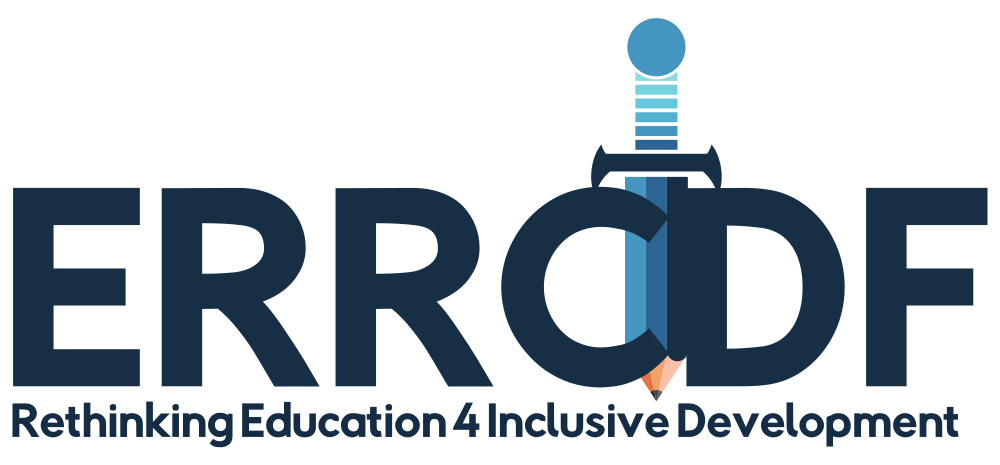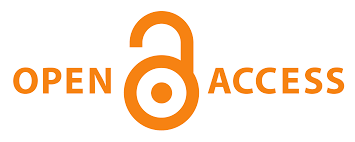Undergraduate students’ exploration of Instagram and TikTok in learning language skills contents: A leverage to digital literacy
DOI:
https://doi.org/10.38140/ijer-2023.vol5.08Keywords:
Instagram, TikTok, digital literacy, language skills, language contentsAbstract
The literacy needed to live efficiently and functionally in a knowledge-driven society goes beyond the ability to read, write and calculate to a more encompassing literacy such as digital literacy. Two social media platforms, Instagram and TikTok, lend themselves to digital literacies and practices needed to learn language skills and content with ease and fun. The study investigated undergraduate students’ knowledge of and competence in using Instagram and TikTok as learning spaces for learning language skills and content. The study also examined the influence of age and gender on undergraduate students’ competence to use Instagram and TikTok to learn language skills and content. Two major language departments in a university in Nigeria were involved in the study. Three hundred and fifty-two students constituted the sample for the study; 110 from Linguistics/Languages Department and 242 from English and Literary studies. Data were collected using a close-ended-self-constructed questionnaire and a checklist. The data were analysed using inferential statistics. The study revealed that undergraduate students possess adequate knowledge of Instagram and TikTok as learning spaces and are competent to harness the features of Instagram and TikTok to learn language skills and language content. The study also shows that age and gender influence undergraduate students’ competence in using Instagram and TikTok. The study recommended that undergraduate students should harness the potential of Instagram and TikTok on activities that will enhance their linguistic repertoire.
References
Abd-Aziz, A., & Abd-Aziz, A. (2020). The influence of gender differences on Instagram usage among higher institution students. International Journal of Modern Trends in Social Sciences, 3(14), 78-83. https://doi.org/10.35631/IJMTSS.314007
Alakpodia, O. N. (2014). Gender differences in computer use skill among students of School of Health Technology, Ufuoma, Delta State. International Journal of Digital Library Services, 4(4), 1-11.
Attuquayefio, S.N. & Addo, H. (2016). Gender and Age Comparison of Information Communication and Technology Usage among Ghanaian Higher Education Students. American Journal of Information Systems, 4 (1), 1-6. https://doi.org/10.12691/ajis-4-1-1
Ayuni, A., Al-Amin, M. & Shaidatul, A. (2017). Students’ perceptions and attitudes towards the use of Instagram in English language writing. Malaysian Journal of Learning and Instruction (MJLI), Special issue on Graduate Students Research on Education, 47-72. https://doi.org/10.32890/mjli.2017.7796
Dada, E.M. & Jimola, F.E. (2021). ESL learners’ praxis of asynchronous and synchronous modes for spoken English: notions and optimisations. Asian Journal of Language, Literature and Culture Studies, 4(3), 31-42. http://www.sdiarticle4.com/review-history/68084
Daniar, S., Dian, F., & Ninik, N. (2022). Boosting the English vocabularies of young learners through Tik-Tok application in digital era. Jurnal Sinestesia, 12(1), 58-65. https://doi.org/10.53696/27219283.125
Duan, C. (2023). Tik Tok: A new way of English learning. Journal of Education, Humanities and Social Sciences, 8, 127-133. https://doi.org/10.54097/ehss.v8i.4237
Desa,A., Embi, M., & Hashim, H. (2019). The effects of Instagram based activities in improving secondary school students’ writing skill. International Journal of Research and Innovation in Social Science, 3(4), 339-363.
Erarslan, A. (2019). Instagram as an education platform for EFL learners. The Turkish Online Journal of Educational Technology, 18(3), 54-69. https://eric.ed.gov/?id=EJ1223776
Gonulal, T. (2019). The use of Instagram as a mobile-assisted language learning tool. Contemporary Educational Technology, 10(3), 309-323. https://doi.org/10.30935/cet.590108
Handayani, F. (2016). Instagram as a teaching tool? Really? Proceedings of the Fourth International Seminar on English Language and Teaching, Igniting a Brighter Future of EFL Teaching and Learning in Multilingual Societies, 320-327.
Jodi, P. & Elda, E.M. (2019). Defining literacy in the 21st Century: A guide to terminology and skills. Texas Journal of Literacy Education, 1(1), 60-69. https://eric.ed.gov/?id=EJ1110822
Kerži?, D., Danko, M., Zorko, V., & De?man, M. (2021). The effect of age on higher education teachers’ ICT use. Knowledge Management & ELearning, 13(2), 182–193. https://doi.org/10.34105/j.kmel.2021.13.010
Khlaif, Z. N., & Salha S. (2021). Using TikTok in education: a form of micro-learning or nano-learning? Interdisciplinary Journal of Virtual Learning in Medical Sciences, 12(3), 213-218. https://doi.org/10.30476/ijvlms.2021.90211.1087
Lin, C. S., Irawan, R., & Permana, S.A. (2023). Problems faced by the EFL students in implementing TikTok as a speaking learning medium. ASSEHR, 695, 287–295.
Mahmud, M., Ammade, S., Halim, A., & Amin, F. (2022). Students’ voices of the use of Facebook and Instagram in teaching English in the university context. International Journal of Language Education, 6(2), 113-127. https://doi.org/10.2991/978-2-494069-39-8_28
Mei, K. L., & Aziz, A. A. (2022). Students’ perception on using TikTok application as an English learning tool. International Journal of Academic Research in Progressive Education and Development, 11(4), 166–190.
Nur, I., Syahirah, R., & Isma, N. (2021). Investigating the usefulness of TikTok as an educational tool. International Journal of Practices in Teaching and Learning, 1(2), 1-6.
Perifanou, M., Tzafilkou, K., & Economides, A.A. (2021). The role of Instagram, Facebook, and YouTube frequency of use in university students’ digital skills components. Educ. Sci., 11, 766. https://doi.org/10.3390/educsci11120766
Phuapan, P., Viriyavejakul, C., & Pimdee, P. (2015). Digital Literacy Skill of Students in Public Higher Education Institutes. In The Asian Conference on Technology in the Classroom (pp. 1-10).
Royal Society, (2012). Shut down or restart? The way forward for computing in UK schools. https://royalsociety.org/-/media/education/computing-in-schools/2012-01-12-computing-in-schools.pdf
Stordy, P. (2015) Taxonomy of literacies. Journal of Documentation, 71(3), 456-476. https://doi.org/10.1108/JD-10-2013-0128
Tan, K.H., Rajendran, A., Muslim, N., Alias, J., & Yusof, N.A. (2022). The potential of TikTok’s key features as a pedagogical strategy for ESL classrooms. Sustainability, 14, 1-22. https://doi.org/10.3390/su142416876
Tang, C.M. & Chaw, L.Y. (2016). Digital literacy: A prerequisite for effective learning in a blended learning environment? The Electronic Journal of e?Learning, 14(1), 54-65. https://eric.ed.gov/?id=EJ1099109
United Nations Educational Science Cultural Organizations (2018). Defining Literacy. GAML Fifth Meeting. Hamburg, Germany. https://gaml.uis.unesco.org/wp-content/uploads/sites/ 2/2018/ 12/4.6.1_07_4.6-defining-literacy.pdf
Xiuwen, Z. & Razali, A. (2021). An overview of the utilisation of TikTok to improve oral English communication competence among EFL undergraduate students. Universal Journal of Educational Research, 9(7), 1439 - 1451. https://doi.org/10.13189/ujer.2021.090710
Yélamos-Guerra, M., García-Gámez, M., & Moreno-Ortiz, A. J. (2022). The use of TikTok in higher education as a motivating source for students. Porta Linguarum 38, 83-98. https://doi.org/10.30827/portalin.vi38.21684
Downloads
Published
How to Cite
Issue
Section
License
Copyright (c) 2023 Folasade Esther Jimola

This work is licensed under a Creative Commons Attribution-NonCommercial-NoDerivatives 4.0 International License.










